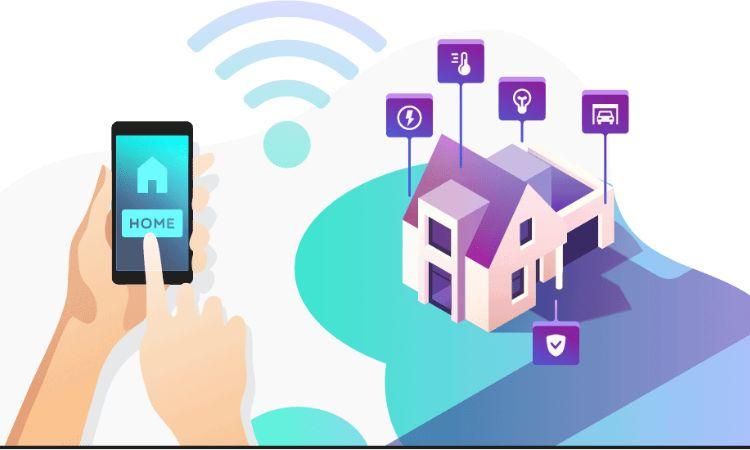Home Automation System: Transforming Homes into Smart Living Spaces

Home automation systems are revolutionizing the way we interact with our living spaces. By integrating advanced technologies, these systems enable homeowners to control various aspects of their home environment with ease and efficiency. From lighting and temperature control to security and entertainment, home automation systems offer convenience, energy savings, and enhanced security. In this blog, we’ll explore what home automation systems are, their key components, benefits, and the future of smart homes.
What is a Home Automation System?
A home automation system is a network of devices that communicate with each other and can be controlled remotely via a smartphone, tablet, or computer. These systems use a combination of hardware and software to manage and automate household functions. The core of a home automation system is a central hub or controller that connects and coordinates various smart devices within the home.
Key Components of a Home Automation System
- Central Hub/Controller: The brain of the home automation system, the hub connects all smart devices and allows them to communicate. Popular hubs include Amazon Echo, Google Nest Hub, and Samsung SmartThings.
- Smart Devices: These are the components that perform specific functions. Common smart devices include:
- Smart Lights: LED bulbs that can be controlled remotely to adjust brightness, color, and scheduling.
- Smart Thermostats: Devices like the Nest Learning Thermostat that can learn your schedule and optimize heating and cooling.
- Smart Locks: Keyless entry systems that can be controlled via an app for enhanced security.
- Smart Cameras and Security Systems: Surveillance devices that provide real-time monitoring and alerts.
Benefits of Home Automation Systems
- Convenience and Comfort: Home automation systems simplify everyday tasks. Imagine adjusting your thermostat, turning off lights, and locking your doors—all from your smartphone. Voice assistants like Alexa and Google Assistant add an extra layer of convenience.
- Energy Efficiency: Smart thermostats and lighting systems can significantly reduce energy consumption by optimizing usage based on occupancy and time of day. This not only lowers utility bills but also reduces the environmental footprint.
- Enhanced Security: Home automation systems offer robust security features. Smart locks, cameras, and sensors provide real-time alerts and remote monitoring, giving homeowners peace of mind whether they are at home or away.
- Customization and Flexibility: Home automation systems can be tailored to individual preferences and needs. Users can create customized routines and scenarios, such as setting the perfect ambiance for movie nights or ensuring the house is secure when everyone is asleep.
- Accessibility: For individuals with disabilities or the elderly, home automation systems can greatly enhance independence and safety. Voice control and automated routines make daily tasks easier and more manageable.
The Future of Home Automation
The home automation market is rapidly evolving, with advancements in artificial intelligence (AI), machine learning, and the Internet of Things (IoT) driving innovation. Future home automation systems will be even more intuitive, learning from user behaviour and adapting to individual needs seamlessly. Integration with renewable energy sources and smart grids will further enhance energy efficiency and sustainability.
Voice assistants and smart speakers are expected to become more sophisticated, acting as central hubs for increasingly complex home automation networks. Additionally, interoperability between different brands and devices will improve, making it easier for consumers to create cohesive smart home ecosystems.
Conclusion
Home automation systems are transforming how we live, offering unparalleled convenience, security, and efficiency. As technology continues to advance, smart homes will become more accessible and integrated into our daily lives, making them an indispensable part of modern living. Whether you are a tech enthusiast or simply looking for ways to enhance your home, investing in a home automation system is a step towards a smarter, more connected future.
Top of Form
Bottom of Form
- Art
- Causes
- Crafts
- Dance
- Drinks
- Film
- Fitness
- Food
- Juegos
- Gardening
- Health
- Home
- Literature
- Music
- Networking
- Other
- Party
- Religion
- Shopping
- Sports
- Theater
- Wellness
- IT, Cloud, Software and Technology


